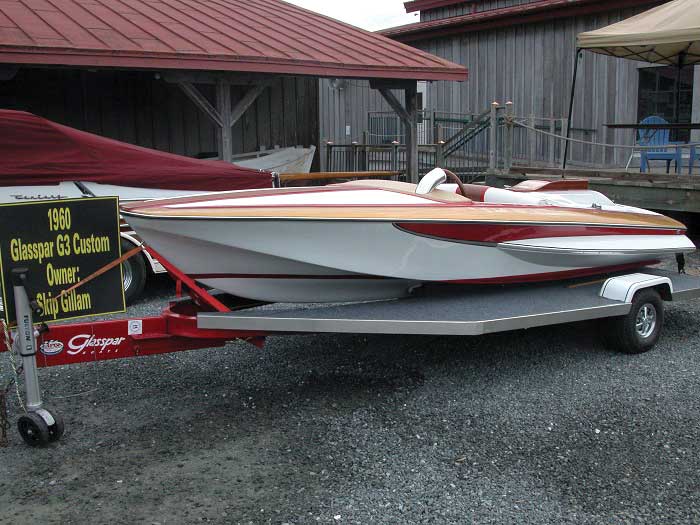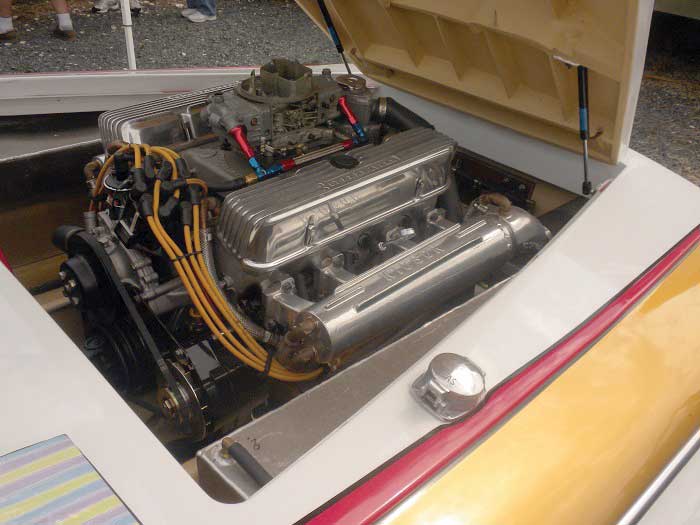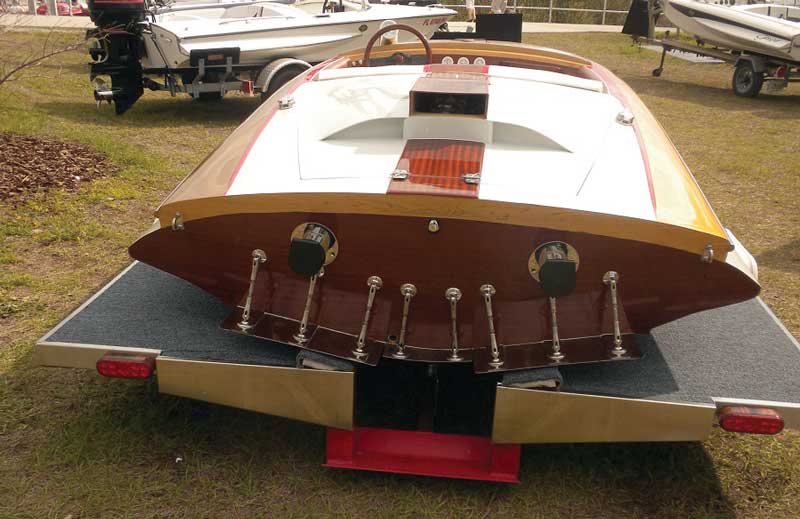The Glasspar G-3 model was the boating world’s speedster for teens in the 1960s. Glasspar named the model the “G-3,” likening it to the U.S. Military’s missile with the same name. This go-fast waterski boat turned on a dime and took its owner on water adventures every time she left the pier.

Back in the day, the G-3 rolled off the production line with the following specs: length – 13’7”, weight – 390 pounds, rated – 60-hp outboard.
G-3s were nimble sportscars on the water. They had long foredecks and cockpit side openings that tapered like a barrel-back Chris-Craft from the 1940s. The maximum passenger weight was listed as 600 pounds. Although the cockpit opening narrowed, the aft end of the boat did not. G-3s featured anti-trip chines under a projecting sponson design. That feature made a G-3 wider at the stern than at the end of the long deck, which ends past amidships. The sponsons also allowed for the weight of a big outboard engine. This is a major design feature among fiberglass boats, not just in the 1960s but right up until today. They were powered by the top outboards of that time: either a 40-hp Evinrude or a 45-hp Mercury.
Beautifully restored, this G-3 was then modified from an outboard boat to an inboard. This V-drive speedster is powered with a hot-rodded Buick Aluminum V-8 and other custom touches.

Buick’s aluminum V8 was a bold innovation for the Motor City in 1961. That year, General Motors launched three compacts: the Buick Special, the Oldsmobile F-85, and the Pontiac Tempest. These three cars debuted with several advanced technical features. The new 215 cubic-inch lightweight V8 they had in common was also one of the more interesting advances for boating.
That new V8 was a mere 318 pounds, several hundred pounds lighter than a small-block Chevy and half the weight of a big Chrysler or Cadillac V8. Racers were quick to recognize the performance potential, starting with Mickey Thompson, who successfully ran a modified version in the 1962 Indy 500 with driver Dan Gurney, qualifying in the eighth spot.
One of the most fascinating points about the G-3 was how it was made. Since the sponsons’ cantilevered position didn’t allow the hull to be molded in one piece, the top half of the sponsons were added after the hull was removed from its mold.
The weak link in the G-3’s structural longevity is its transom and stringers:
- The rear side decks were designed so as not to cover the entire transom.
- The transom’s plywood reinforcement (four layers of three-eighth-inch plywood) was neither painted nor fiberglassed, leaving it exposed at the top.
- The rear side decks were not structurally connected to the transom.
- A small aluminum trim piece that covered the joint unfortunately directed rainwater to the top of the transom’s unprotected wood.
- Last but not least, the flooring (quarter-inch plywood) was only covered in fiberglass on the top side. The bare wood on the underside could potentially rot from the bottom up if water remained inside the inner hull for any length of time.

One owner transformed his G-3 into a V-drive aluminum Buick-powered inboard. He’s a lifelong aficionado of classic boats, including the rare Chris-Craft Golden Arrow. When he learned about a Glasspar G-3 that was heading to the dump, he gathered up some Chris-Craft parts and some Jersey speed skiff boat racing parts. Combining it all with his longtime marine industry expertise, he created his own inboard G-3. She was an award-winner, too, displayed at a prior Classic Boat Festival in St. Michaels, MD.
PS: Don’t forget to mark your calendars. This year’s dates for that Antique and Classic Boat Show are June 16-18 at the Chesapeake Bay Maritime Museum in St. Michaels, MD.
By Chris "Seabuddy" Brown